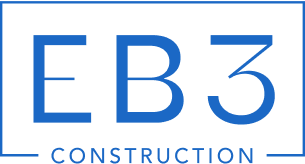Nearly 40% of construction projects exceed their original budgets, often leaving owners scrambling to cover unexpected costs. Open-book construction management eliminates these surprises by requiring contractors to share detailed cost data with owners and project partners.
This transparent delivery approach covers everything from actual labor costs and supplier invoices to overhead calculations and profit margins. When we manage projects through open-book contracting, owners gain complete visibility into where every dollar goes, creating a foundation for collaborative decision-making and proactive risk control throughout design-build and construction management-at-risk projects.
How Does Open-Book Contracting Work From Preconstruction To Buyout?

We approach open-book contracting as a structured process that begins with establishing our fees and resource requirements upfront. During preconstruction, we build estimates from the actual cost of work: labor rates, material costs, equipment expenses, and all direct project costs. This differs fundamentally from traditional approaches where markups and estimates might obscure true costs.
Our team conducts thorough design evaluation to identify scope gaps early. We work directly with design partners to address these voids before they become costly change orders. Through this collaborative process, we develop comprehensive budgets using both internal cost data and input from our trade contractor network. Each option gets reviewed line by line with the owner, ensuring complete transparency in budget development.
Constructability Review And Project Scheduling
We evaluate constructability concerns and assess the means and methods required to deliver work safely and efficiently. This analysis helps us identify potential construction challenges before they impact schedule or budget. Our detailed project schedule ties directly to each trade’s scope, creating clear coordination points and realistic delivery timelines.
Each trade’s scope gets clearly defined to eliminate overlaps and ensure complete coverage. We develop comprehensive bid packages that capture all work elements without redundancy between trades. Our process includes maintaining a list of prequalified subcontractors for each package, ensuring we work with trade contractors who have the capacity and experience for similar work.
Competitive Bidding Process
We administer a competitive bid process that includes on-site pre-bid meetings, detailed scope reviews, and coordinated question-and-answer sessions with trade contractors. This ensures complete understanding of project requirements before bids are submitted. The competitive nature remains intact despite the open-book approach, as trades still compete for their individual scopes.
Once bids come in, we review and level all proposals for apples-to-apples comparison. We identify discrepancies using internal takeoffs and cost data to verify scope coverage by each bidder. Our team develops a comprehensive bid tab document for each package, summarizing all costs for review with owners and design partners. This document becomes part of the transparent cost proposal that defines the project’s financial foundation.
Value Engineering And Final Buyout
Target budget alignment drives our value management and value engineering efforts. We work to achieve acceptable budget levels while identifying additional cost savings opportunities. The owner receives complete visibility into all trade packages and can review the comprehensive budget knowing that work was competitively bid among qualified contractors.
Throughout this process, we continue seeking savings while providing options for owner-driven additions or enhancements. The transparent cost proposal includes detailed breakdowns that support informed decision-making. This comprehensive approach delivers certainty in both cost and schedule while maintaining the collaborative relationship essential to project success.
How Do Pricing And Contracts Function Under Open-Book Construction Management?
Open book pricing operates as a cost-plus structure that reimburses owners for actual project costs. We add a fixed fee or percentage markup to cover overhead and profit. This transparent approach allows clients to see every cost detail, from labor rates to material invoices.
The financial structure flows costs directly to owners. When project expenses exceed estimates, owners pay the difference. When we find savings, those benefits pass to the owner as well. This cost flow creates transparency and builds trust between all project partners.
Guaranteed Maximum Price Integration
Many open-book arrangements incorporate a guaranteed maximum price (GMP) to provide cost certainty. The GMP sets an upper limit on total project costs. We absorb any overruns beyond this ceiling, while owners benefit from shared savings when costs come in below the maximum.
Shared savings splits typically range from 25 to 50 percent. This structure encourages us to find efficiencies and cost reductions. The arrangement aligns our interests with the owner’s financial goals while maintaining transparency throughout the process.
Core Financial Features
Transparent change orders form a cornerstone of open-book pricing. We document every modification with detailed cost breakdowns. Owners see exactly how changes affect the budget before approving them. This visibility prevents surprises and supports informed decision-making.
Supplier and subcontractor cost visibility extends transparency throughout the supply chain. We share subcontractor proposals and supplier invoices with owners. This open approach allows owners to verify costs and understand where their money goes. Trade contractor bids remain competitive despite the transparency.
Owner cost verification provides ongoing financial oversight. Owners can review our accounting records and project expenses. We maintain detailed documentation of labor costs, material purchases, and equipment charges. This verification process supports the collaborative relationship while ensuring cost accuracy.
The structure supports early risk mitigation through collaborative cost control. We identify potential cost issues during preconstruction and construction phases. Owners participate in decisions about risk management and cost alternatives. This shared approach reduces project surprises and keeps costs aligned with expectations.
When Should You Choose Open-Book vs. Fixed Pricing?

The choice between open-book and fixed pricing depends on project complexity, owner involvement, and market conditions. We evaluate each project’s specific requirements to recommend the most suitable approach for developers and property owners.
Open-book pricing works best for complex projects where scope may evolve during construction. When we encounter unique design challenges, volatile material markets, or projects requiring extensive owner collaboration, open-book provides the flexibility needed for successful delivery. This approach allows real-time cost adjustments while maintaining competitive bidding among trade contractors.
When We Recommend Open-Book Pricing
We recommend open-book pricing for projects with evolving requirements or high complexity. Large commercial developments, design-build projects, and construction in volatile markets benefit from this transparent approach. The detailed cost breakdowns help owners make informed decisions about scope changes and value engineering opportunities.
Projects requiring significant owner input throughout construction also favor open-book pricing. When developers want active involvement in material selection, system choices, or design modifications, the transparent cost structure supports collaborative decision-making. Competitive bidding among trades continues under this model, ensuring market-driven subcontractor pricing.
Market volatility makes open-book pricing attractive for risk mitigation. During periods of material price fluctuations or labor shortages, the cost-plus structure protects both parties from unpredictable market swings. We maintain competitive pressure on trade contractors while providing cost transparency to owners.
When We Use Fixed Pricing
Fixed pricing suits straightforward projects with well-defined scope and limited complexity. Small renovations, tenant improvements, and projects following established design patterns work well under fixed-price contracts. This approach provides budget certainty for owners who prefer predetermined costs.
Traditional design-bid-build projects often align with fixed pricing, particularly when competitive bidding drives contractor selection. Owners with limited time for project involvement benefit from the simplicity of fixed costs. Urgent timelines favor this approach since lengthy cost negotiations are eliminated.
Established client relationships with clear scope definition support fixed pricing effectiveness. When we have historical data from similar projects and strong trust with developers, fixed pricing offers efficiency. However, market volatility can strain margins under this structure, requiring careful risk assessment during volatile periods.
The decision ultimately depends on balancing transparency needs, risk tolerance, and project complexity. We help owners evaluate these factors to select the pricing model that best serves their specific project requirements and business objectives.
What Controls, Audits, And Records Support Open-Book Success?
Effective controls, audits, and records form the backbone of successful open-book construction management. We establish comprehensive systems that protect sensitive data while maintaining transparency across all project phases.
Setting up a cost assurance strategy early prevents complications later. We communicate this strategy to all supply chain partners, defining clear protocols for sharing sensitive data and establishing sampling methods. GDPR and privacy protocols must be integrated from project inception, protecting personal data while maintaining the transparency open-book requires.
Pre-Agreement And Training Protocols
Cost build-up methods, allocation procedures, and reporting standards require agreement before construction begins. We enforce audit clauses consistently and train all team members on open-book principles. This training covers data handling, cost verification procedures, and collaborative communication standards.
Independent, risk-based audits provide objective oversight while protecting sensitive payroll and rate information. These audits focus on high-risk areas rather than blanket reviews, maximizing efficiency while maintaining thorough oversight.
Essential Records And System Access
Comprehensive record-keeping enables effective cost verification and project control. We maintain access to cost capture systems and raw financial data, ensuring real-time visibility into project expenses. Chart of accounts and cost codes provide standardized tracking across all project elements.
Payroll and labor rates require careful documentation, along with employment and insurance records that support these costs. Project time tracking and overhead allocation records demonstrate how indirect costs relate to direct project work. Plant and material rates must be current and verifiable through supplier documentation.
Cost reports covering both actual and forecast data enable proactive management rather than reactive responses. Contract documents and change orders create an audit trail for all project modifications. Purchase orders and invoices provide detailed transaction records, while subcontract and design costs maintain transparency throughout the supply chain.
Risk and change registers track potential issues and modifications systematically. Rate build-ups show how unit costs develop from base rates and adjustments. Asset registers document equipment and material ownership and utilization. Overhead allocations demonstrate fair distribution of indirect costs across project components.
Minimizing Disallowed Costs
Proactive cost management prevents disputes and maintains project efficiency. We issue early warnings when potential cost issues emerge, keeping risk and change registers current with real-time updates. Prompt approval of variations prevents cost escalation from delayed decisions.
Pre-agreeing rate and resource changes eliminates surprises when project conditions shift. Single-source information systems prevent conflicting data and ensure all team members work from identical cost information.
Real-time expense tracking enables immediate course corrections rather than end-of-month surprises. Schedule alignment with budgets ensures cost expectations match project timing. Frequent, clear stakeholder communication maintains transparency and enables collaborative problem-solving.
Conclusion And Next Steps

Open-book construction management creates a foundation for successful project delivery by combining cost transparency with collaborative risk control. When we implement this approach correctly, it transforms the traditional adversarial relationship between owners and contractors into a partnership focused on shared success. The transparency required builds trust that extends beyond individual projects.
To implement open-book construction management effectively, we start with clear contract structure decisions. Choose between cost-plus arrangements that provide maximum flexibility or GMP contracts that include shared savings provisions. Define the savings split early, whether 25%, 50%, or another percentage that motivates efficiency while protecting owner interests. Establish data-sharing protocols that protect sensitive information while maintaining the transparency that makes open-book approaches valuable. Set up independent audit procedures that verify costs without compromising competitive position.
The operational elements require consistent execution throughout the project lifecycle. Run competitive trade bids using systematic bid leveling to ensure apples-to-apples comparisons. Align project schedules with budget forecasts so financial tracking supports construction sequencing. Maintain real-time expense tracking systems that capture costs as they occur rather than waiting for monthly reporting cycles. Update risk and change registers immediately when issues arise, allowing proactive management rather than reactive problem-solving. Keep owner-team communication frequent and structured, with regular budget reviews and transparent cost reporting that supports informed decision-making.
Ready to implement open-book construction management on your next project? Contact EB3 Construction to discuss how transparent cost management can benefit your development goals.




